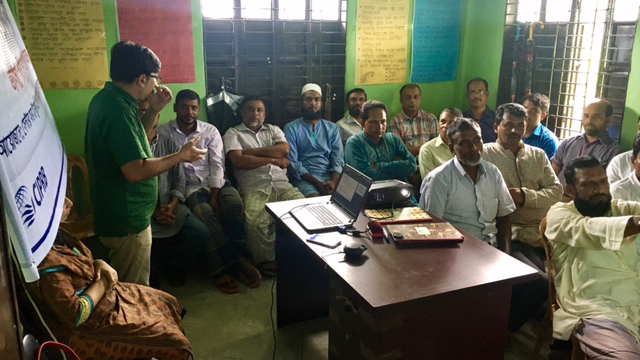Theory of change
Method
Theory of Change is used to map approaches to achieving a desired change in a specific context. The method can be used to fill the gaps between the goals of a National Water Safety Plan, and the activities or interventions that will lead to the goals being achieved.
This process works best through interactive group work with stakeholders experienced in drowning reduction who have a good knowledge of the local context. With these stakeholders, identify the long-term goals (or aims) of a water safety plan and consider what will need to occur for these to be achieved. This is the first step towards determining the plans objectives. Objectives should be pre-conditions to the completion of each goal. Remember to add as much detail as possible, demonstrating the likelihood of each long-term goal being achieved through the identified objectives. You may like to identify specific project activities that are associated with each objective. For example, the Australian National Water Safety Strategy 2016-2020 lists an end goal of achieving a 50% national reduction in drowning by the year 2020. Eleven more specific goals have been established, each anticipated to contribute towards the end goal (for example, ‘reduce drowning deaths at inland waterways’ and ‘reduce alcohol- and drug-related deaths’). Each specific goals is associated with a number objectives (for example, ‘promote community-wide rescue and resuscitation skills’).
When planning objectives, ensure that all stakeholders feel comfortable in expressing whether they think approaches will or will not work. Encourage discussion amongst stakeholders and attempt to reach a consensus on the most strategic and achievable objectives. It is also important to identify and document any assumptions that are made by the group.
Add quantifiable indicators to each goal and objective where possible. This will allow you to monitor what progress has been made towards achieving long-term water safety plan goals overtime. Each outcome should have at least one indicator. Over the course of plan implementation, collect data to measure and assess the completion of each indictor. This can be done through a number of primary data collection methods.
This approach to planning provides a transparent, step-by-step guide to achieving water safety plan goals that have been discussed and agreed upon by multiple stakeholders.
Advantages
- Can be used to monitor and evaluate National Water Safety Plan implementation over time.
- Takes into account how the social, economic, political and cultural context will impact the implementation of the plan.
- Encourages developers to challenge each other’s assumptions, with consensus representing the most realistic and strategic option.
Disadvantages
- Aspects of plan implementation may not always occur in a linear fashion. This may complicate attempts at determining progress towards goals.
- It is unlikely that all assumptions will be identified and therefore, unexpected challenges may occur delaying the completion of certain objectives.
- It may take time for developers with conflicting perspectives to reach an agreement on plan objectives.
- It may be costly to hire a venue, pay travel costs for developers and potentially hire an independent facilitator for the group work process.
Context
A Theory of Change model is particularly useful to when developing a National Water Safety Plan with multiple goals. It is important to ensure that all stakeholders involved in the group work process understand the primary goal of the water safety plan, are familiar with the local context, and have relevant expertise to make valuable contribution.
Examples
Theory of Change basics (PDF 1.07MB)
Detailed guide to developing a Theory of Change model (PDF 598KB)
Literature review of projects that use Theory of Change models to design and evaluate health interventions: Breuer, Erica, et al. "Using theory of change to design and evaluate public health interventions: a systematic review." Implementation Science 11.1 (2016): 63.
More information
Guide to backwards mapping
Approaches to mapping a ‘Pathway of Change' (PDF 338KB)
Step 4
Define a framework
